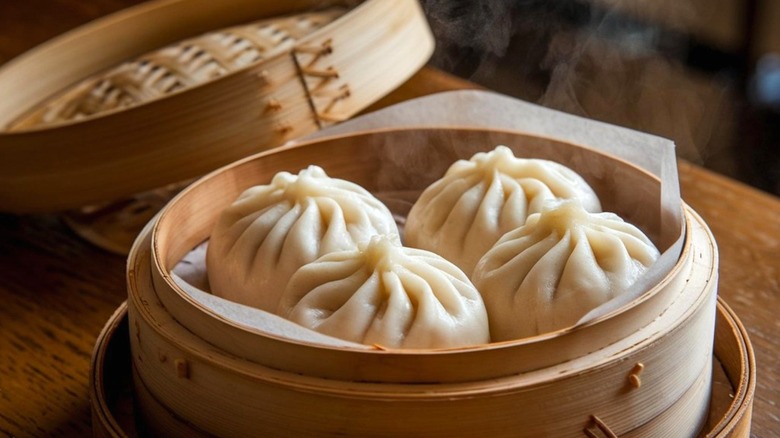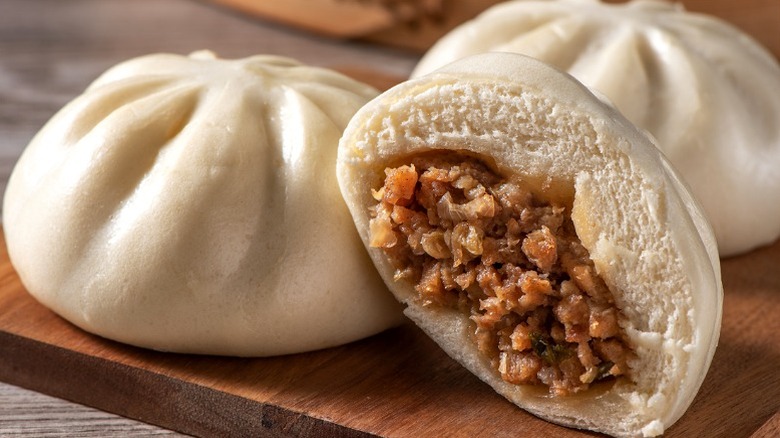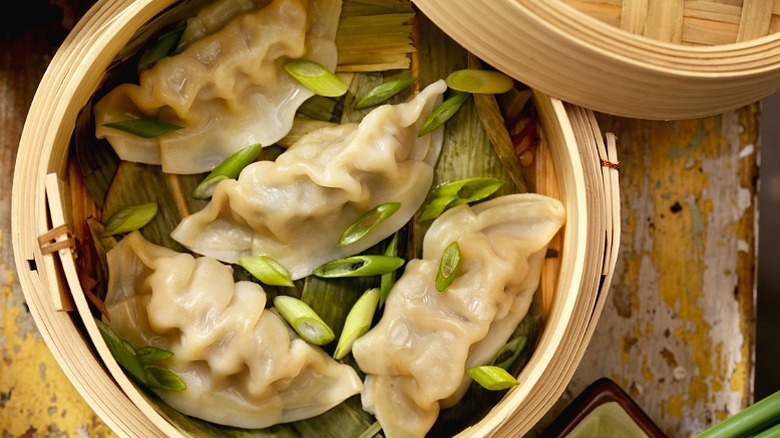What's The Difference Between Pork Buns And Dumplings?
There's a reason so many cultures have their own version of a dumpling. Simply put, they're delicious! Eastern Europe has pierogi, Italy has ravioli, and India even has the deep-fried samosa. What makes every dumpling special is how the dough is cooked and what filling goes inside. Pork is one of the most common fillings, and China is home to several varieties of dumplings and steamed buns with this protein — with the earliest known historical records for each one.
Jiaozi, the traditional "potsticker" dumplings, are made from an unleavened dough with a pasta-like texture. Baozi, steamed buns, have a soft and fluffy leavened dough shell akin to a biscuit. Each dish has a dough made of flour and water, but baozi gets its texture from containing yeast while jiaozi does not. They can each be steamed and contain a tasty pork filling. Both are important parts of Chinese culinary history. However, the cooking preparations and folklore of jiaozi and baozi make them distinct.
Culinary differences between steamed buns and dumplings
Baozi are thick steamed buns in a round or teardrop shape, though sometimes the contents will be folded into the dough hotdog-style. They're about as large as the palm of a hand and have an opaque white to tan color. Yeast is a part of the dough, and milk and sugar are also used to give baozi its signature sweetness and density. Char siu bao in particular capitalizes on this taste and texture with its savory pork barbecue filling. This dish is ideal for eating dim sum around breakfast or lunch.
Jiaozi have semi-opaque dumpling shells that can endure steaming, pan frying, and boiling. They're often folded in a semi-circle and crimped along the edges, but they can have almost any shape as long as they keep the filling inside. The filling also has some range — pork, cabbage, green onion, and ginger are common choices. These qualities make for an iconic dish, which is why Japan developed the gyoza after its potsticker dumpling ancestor. Jiaozi have become part of the Lunar New Year tradition because they symbolize wealth and new beginnings, but they're easily worth eating year-round, too.
Dumplings vs steamed buns in Chinese folklore
Historical records of jiaozi predate steamed buns, with their origin dating back to the Han dynasty (206 B.C. to 220 A.D.) in China. According to legend, Zhang Zhongjing, a famous medicine practitioner, developed the first jiaozi recipe as a way to help patients in his village suffering from frostbite. He wrapped meat and medicinal herbs in a doughy shell to warm and hand out to the afflicted. The villagers likely enjoyed the taste and continued to make them ever since. Archaeologists have even found jiaozi in gravesites from a few hundred years later.
The epic story of baozi begins in the Three Kingdoms era (220 B.C. to 280 B.C.). It's believed that military strategist Zhuge Liang and his men were confronted by a deadly river where the only way to pass was by making a human sacrifice. Locals had thrown severed heads into the river to appease the spirit for safe passage, but Zhuge Liang had a better idea: making steamed buns that resembled heads instead. The river god appreciated the delicious offering and allowed the army to cross the water without any harm. The dish was originally named mantou, meaning "barbarian's head," and it later became baozi.


